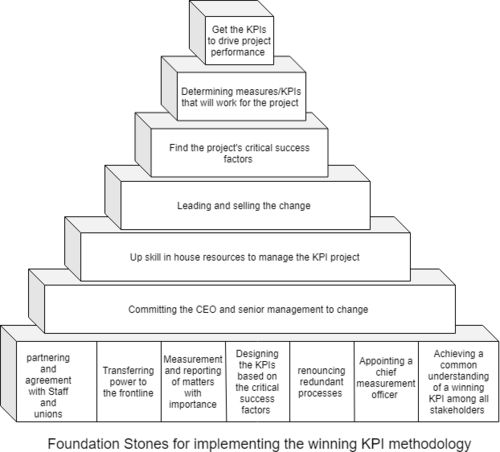The implementation of KPIs
Developed by Shri Tejas Vedula
Abstract
Performance measurement is an important aspect in organisations all around the world. The performance measures should help align the activities to the objectives of a project or an organisation. Indicators for performance hence, aid in transforming and communicating performance measurement to the respective members involved in an organisation. Key Performance Indicators or KPIs are critical indicators that aid in tracking the progress of a project, program or portfolio. Firstly, the article intends to cover the explanation and intended development and use of KPIs in the existing literature i.e. The PMBOK, The standard for project management and Prince2. Secondly, the article focuses on the design and practical application of KPIs in order to control and monitor project decisions and actions. Furthermore, the article will emphasize on the challenges faced by modern day managers in relation to deriving meaning from the plethora of the available key performance indicators.
A brief history of the application of KPIs
KPIs were used by the Wei dynasty rulers in China to rate the performance of the members of the royal family [1]. Performance management and its concepts moved to the industry in the 20th century when there was a need for monitoring the performance of individual employees during the industrial revolution. The use of financial indicators and operational performance management became widespread in the 1930's when a dashboard-like "tableau de bord" was introduced in France to monitor performance. However, the creation of the balance scorecard by Dr Robert Kaplan and Dr David Norton was revolutionary in terms of introducing the first modern KPI framework.
KPIs as seen in project management standards and knowledge bodies
The PMBOK presents the potential use of KPIs under the umbrella of Project Integration Management. KPIs are represented as an aspect of project management information system which are in turn presented as tools and techniques to direct and manage project work[2]. The primary uses of it also lie in project governance where monitoring performance is key. They can also be used in assessing the project's performance in comparison to the plan at the control point in the project life cycle. Monitoring and controlling project management process group.
PRINCE2 defines the use of KPIs as a measure of success. It is defined as a measure of performance that denotes how successful an organisation is in progressing towards its organisational objectives. It recommends the KPIs to be designed keeping balance in background. The balance should be achieved between qualitative and quantitative measure, project inputs and outputs and leading and lagging indicators which allow managers to track project progress during and after the completion of events[3]. Additionally, PRINCE2 suggests the use dashboards to graphically represent the project progress. It suggests the use of common graphical tools such as pie charts and histograms to depict the project progress. These tools allow for easy understanding for stakeholders at all levels.
The PMI standard defines the Monitoring and Controlling Process Group which consists of processes that are required to track review and regulate the performance of a project (source: PMI standard). Monitoring refers to the collection and production of performance data and measures respectively. Controlling, on the other hand refers to the comparison of the actual project performance to the planned performance and project scope baseline. Hence, KPIs in such instances are critical tools.
Designing and defining the KPIs
PRINCE2 suggests that the KPIs should be meeting the "acceptance criteria" and quality expectations which are defined in project product description while also satisfying the project tolerances such as time, cost, scope etc. which are defined in the project initiation documentation. The quality criteria particularly pertains to the KPI being SMART i.e. Specific, Measurable, Achievable, Relevant and Time-Bound.
Relevant examples and KPI types
KPIs can designed in multiple categories such that they benefit a project manager. Primarily, these categories include: Time based KPIs such as Cycle time, On-Time completion percentage, Number of adjustments to the schedule etc. Budget based KPIs such as budget variance, number of budget iterations etc. Quality based KPIs such as customer satisfaction and complaints, number of errors produced etc. KPIs depicting effectiveness such as number of project milestones completed on time.
Steps for successful KPI implementation for projects and organisations
According to the "KPI-Developing, implementing and using winning KPIs " book by David Parmenter,
PRINCE2 correlates the success of business performance to the maturity of an organisation.
Prospective KPI systems for the modern project manager
References
- ↑ Christian Steven, "The History Of KPIs And Their Rise To Popular Use Today", 2017 https://go.christiansteven.com/bi-blog/the-history-of-kpis-and-their-rise-to-popular-use-today
- ↑ Project Management Institute, A Guide to the Project Management Body of Knowledge (PMBOK® Guide), Fifth Edition, 2013
- ↑ AXELOS limited, Managing successful projects with PRINCE2, Sixth Edition, 2017
